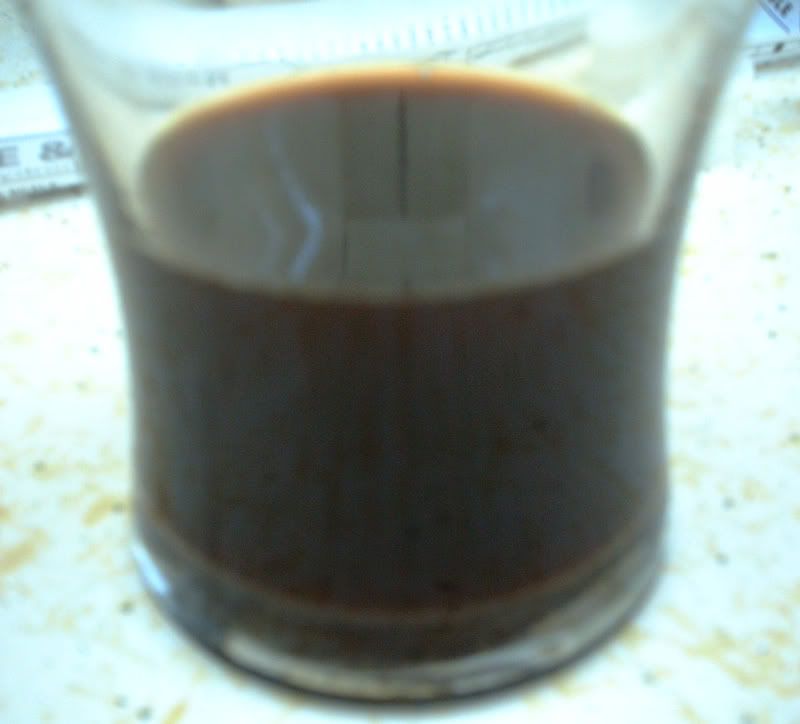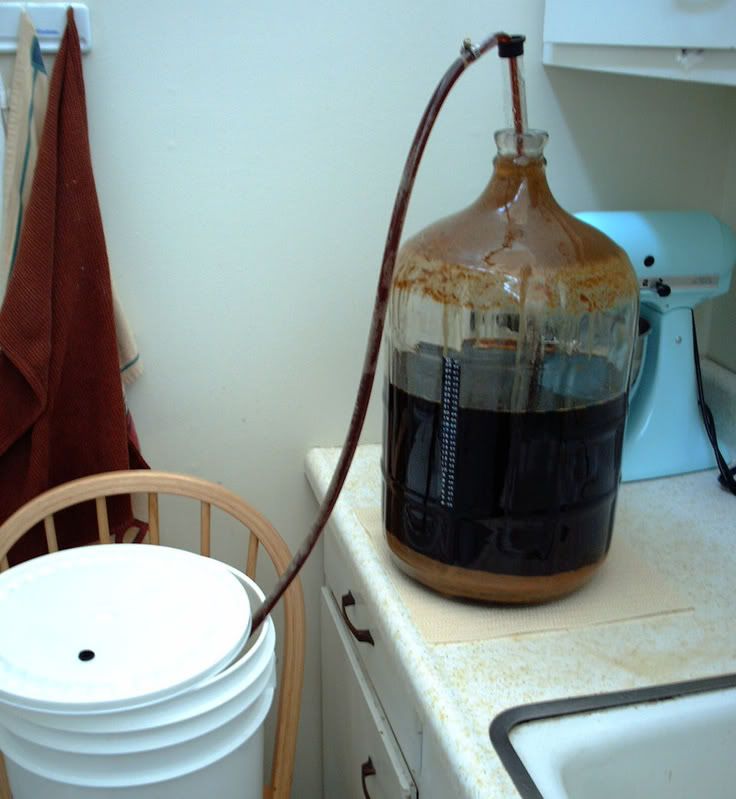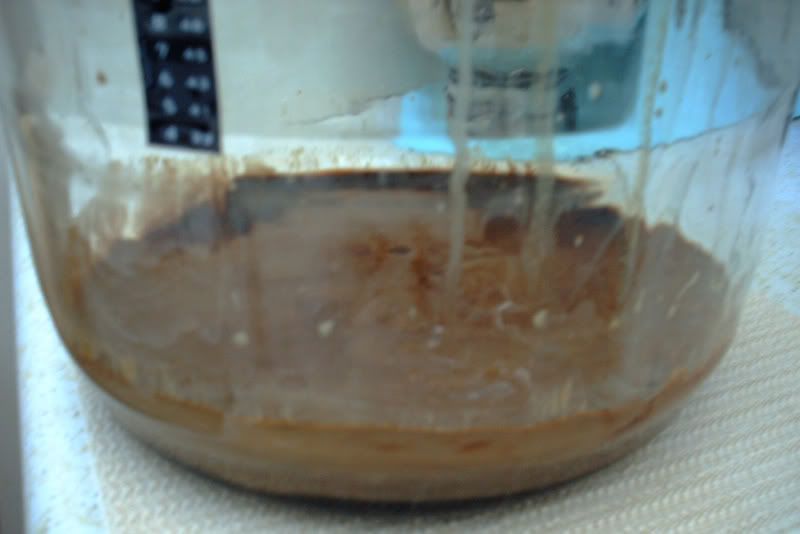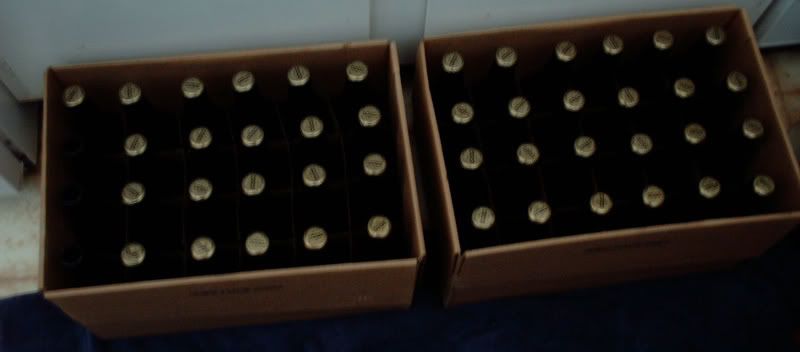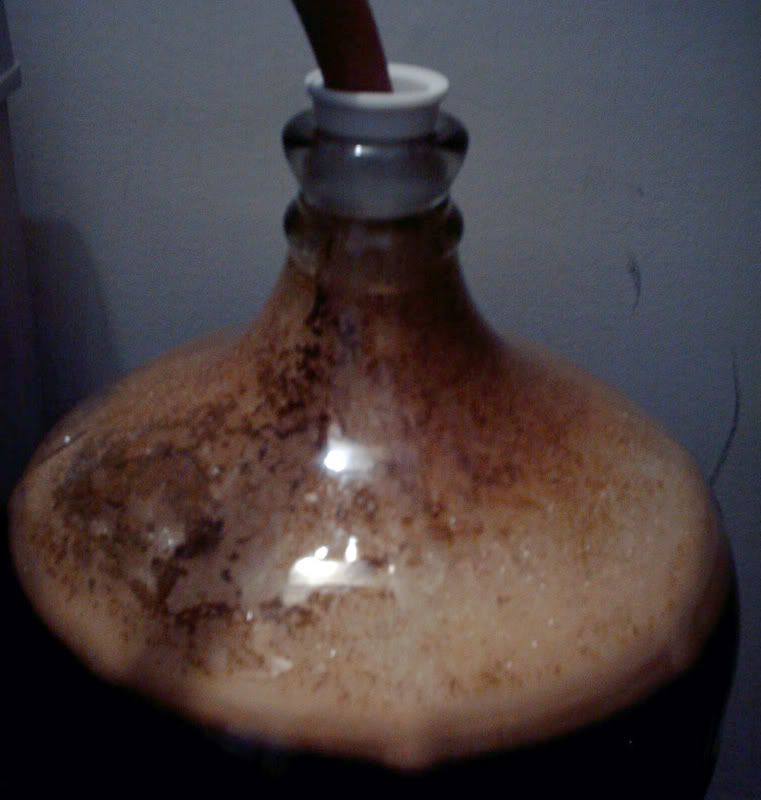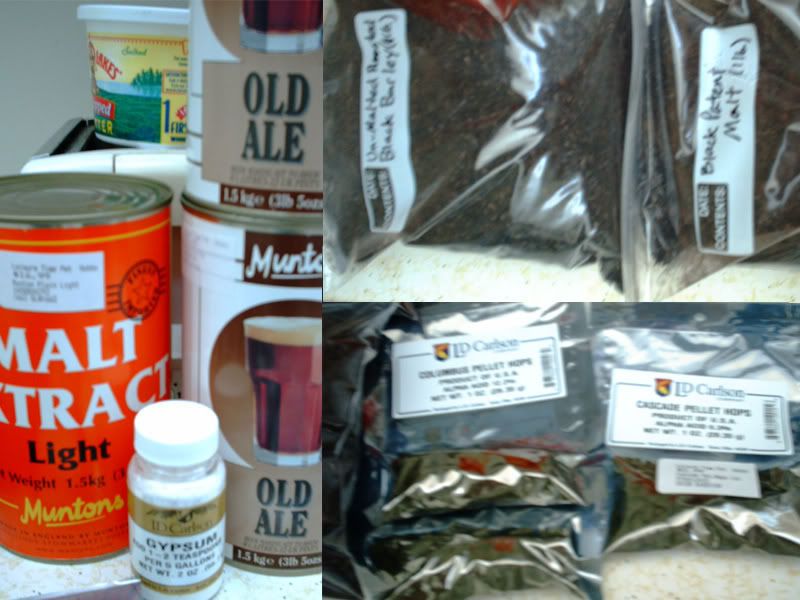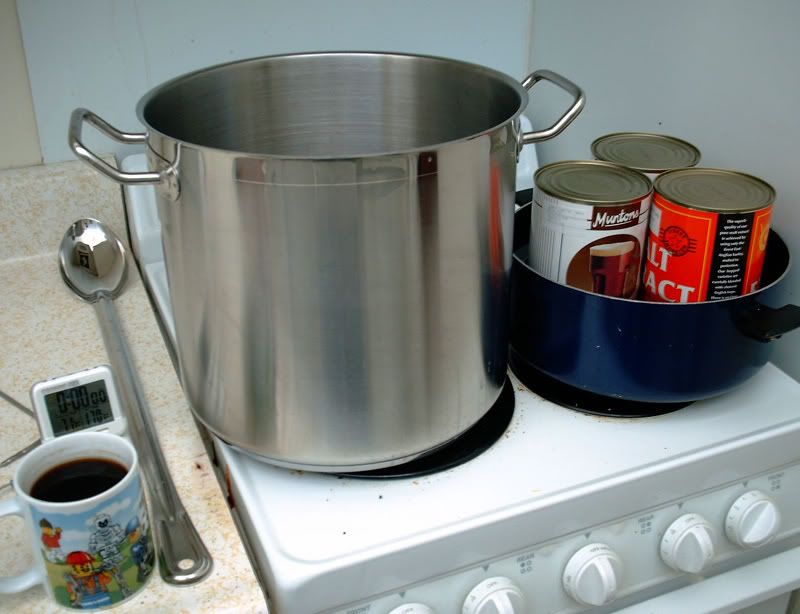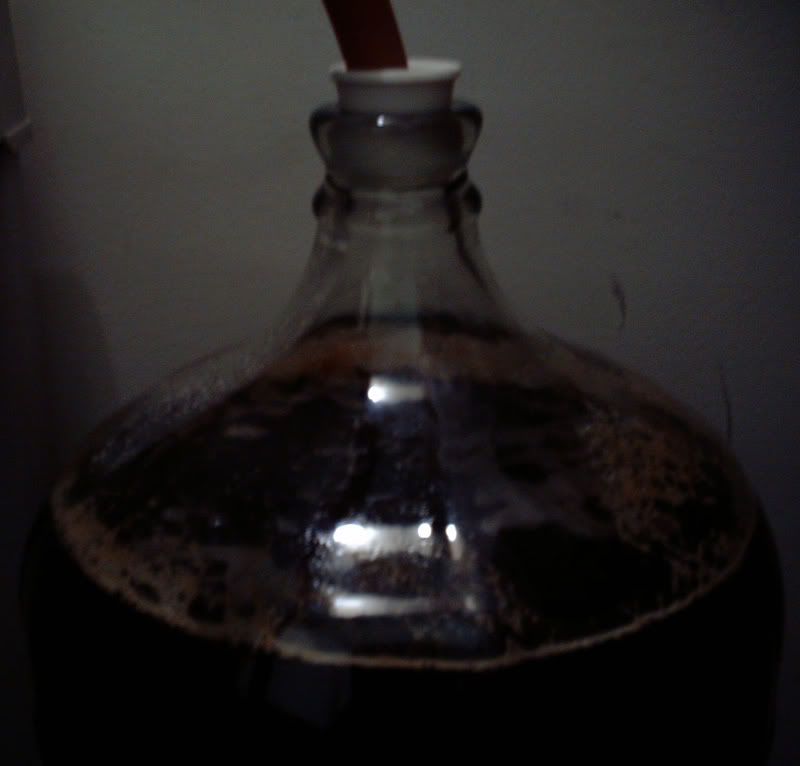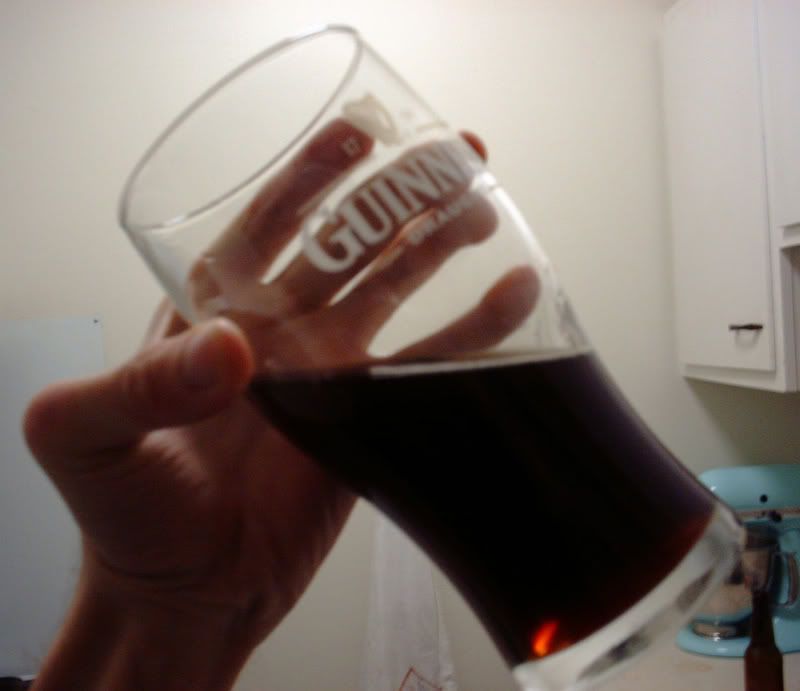Ingredients:
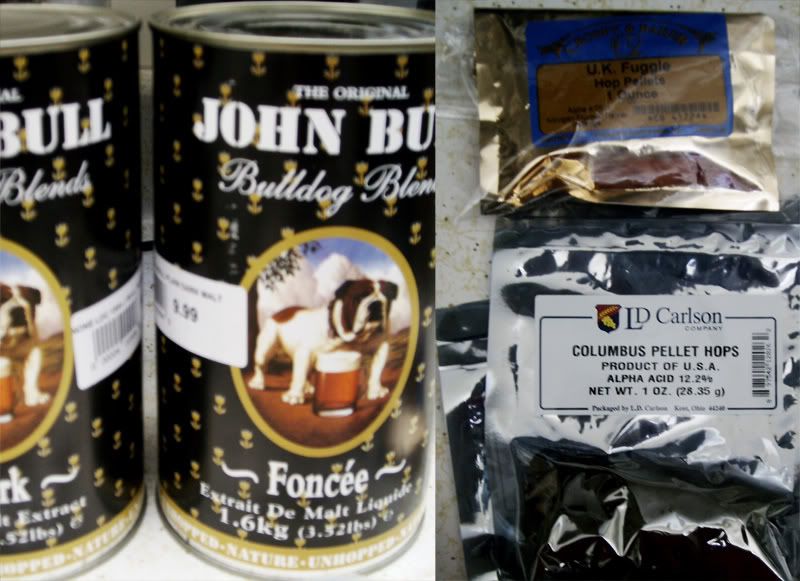

- 7 lbs. of Dark Liquid Malt Extract (unhopped)
- 0.5 lbs. of Black Patent Malt
- 0.5 lbs. of Roasted Barley (unmalted)
- 1.0 lbs. of Flaked Oats (toasted by yours truly)
- 1.0 qt of strong coffee (10 Tbsp. Italian roast, pressed)
- 2.0 oz. of Columbus hops (boiling, 12.2% AA)
- 0.5 oz. of Fuggles hops (aroma, 4.2% AA)
- Whitelabs Irish Ale Yeast (WLP004, liquid, pitchable)
Sadly, there are very few pictures from this brew day. It's easy to get busy/distracted and forget to take pictures. Anyway, here's the procedure:
I toasted the oatmeal in my oven for about 40 minutes at 350F. Unfortunately I only have one oven rack so I wasn't able to toast them as efficiently as I would have liked, but I think they got toasty enough.
The grains and oats were steeped in 1.5 gallons of water at 150F for 45 minutes and the malt extract and hops boiled for an hour. The aroma hops were added for the last minute of the boil.
The cooled wort was then added to 1.5 gallons of water plus the cooled coffee in the fermenter. This time I used a colander to filter out some of the trub, which made adding the wort go a lot faster. Of course, not all of the trub gets filtered out, but that's not such a bad thing as the yeast like to munch on it during the lag phase. The fermenter was then topped off at 5 gallons with more water.
The recored OG was 1.056, right at the top end of the range for this style of beer. The ABV should come out somewhere around 5%, the bitterness around 27 IBU, and the color, well, dark (~48 SRM, for you numbers people).
I had removed the liquid yeast from the fridge about 6 hours prior to pitching time, which in retrospect was more than enough time for it to come to room temperature. When I cracked the seal on the vial it behaved similar to a soda can that had just spent a few minutes in a paint can shaker. I probably lost roughly 25% of my yeast because of that. Always the (naive) optimist, I pitched the remaining yeast and hoped for the best.
This was my first experience with liquid yeast. I've been using dry yeast and the lag times are usually around 8 hours. Thus, I began to grow concerned the next morning when the yeast had still not started to ferment. I tried to bring the temperature up around 70F and I agitated the carboy a bit to try to get the yeast back into suspension. I'm not sure if it was anything I did or not, but the yeast finally started fermenting about 24 hours after pitching, much to my relief.
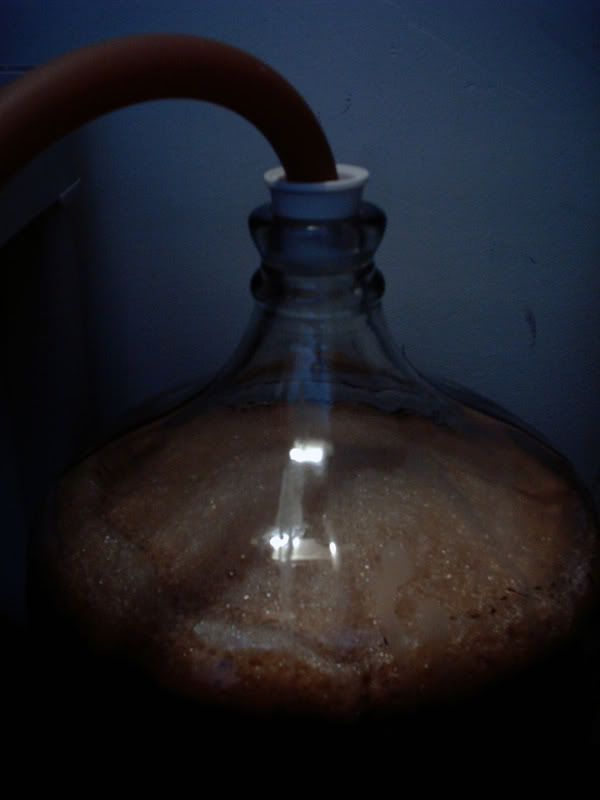
Apparently, liquid yeast, especially those that have been in their packaging for roughly 2 months like mine, have lag times around 15-20 hours, so what I experienced isn't too surprising. I just need to learn to relax a bit more.
I plan on bottling this batch in a couple of weeks. I'm thinking that if the coffee flavor isn't as strong as I'd like I might add some more coffee to the bottling bucket.
